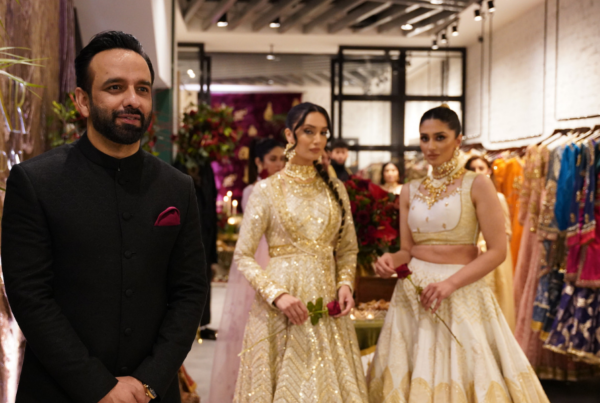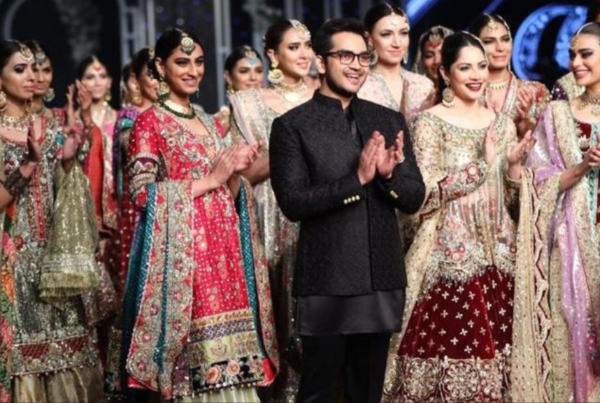The social media patrol has made it impossible for plagiarism to go undetected and by hook or crook, the fashion industry is wisening up to that fact and implementing a strict codes of ethics. That said the codes vary from high end to high street and that line needs to be drawn.
By Aamna Haider Isani
These past two weeks have brought one social media scandal after another to the limelight. Prominent design houses like Sapphire, Sana Safinaz and Zara Shahjehan have been accused (and exposed) of lifting their coveted and often award winning prints off the Internet, off Pinterest to be exact. These design houses churn out dozens, if not hundreds of prints a month and while their in-house designers are at work creating the odd original print now and then, copy-pasting off Pintrest has, until now, has been the more attractive and convenient option. This may have gone unnoticed if it weren’t for the vigilant social media night watch that has taken up the fight against plagiarism as its sole purpose in life.
First of all, there’s nothing unprecedented about this situation; designers all over the world have been feeding off each other’s ideas since time immemorial. Italian designer Roberto Cavalli has been on an aggressive rampage against Michael Kors for years, accusing the American designer of being “the biggest copy designer in the world.†International fashion house Balmain may be a frequent target of knock offs in Pakistan but Balmain Creative Director Olivier Rousteing sent an all-white pant suit with cutout panels that recalled Alexander McQueen’s 1997 couture collection for Givenchy. Christian Louboutin dragged the brand YSL to court for incorporating his trademark red undersole in its collection. And Georgio Armani famously accused Dolce Gabanna of copying his quilted trouser design. The instances are endless.
Recently in Pakistan, scandals have erupted around the frequent use and abuse of prints. Around two weeks ago, blogger Aamiriat exposed a Sapphire budgie print that was a replica of an original design created and uploaded to Pinterest by Swedish graphic designer and illustrator, Johanna Burai. He tagged both Khadijah Shah (Creative Director at Sapphire) and Burai on the post, allowing one to explain and the other to be informed. Johanna Burai was justifiably upset as professional graphic designers make a living off their illustrations. Khadijah Shah, to her credit, was quick to respond with an apology and a promise to rectify the situation and compensate the artist for her work.
“Using the Internet for prints has been a norm and I admit that we have not been vigilant in checking prints for copyrights,†Khadijah Shah spoke to Aamna Haider Isani for this story. “But when this issue arose we decided to institute strict regulations. We have implemented the five-change rule, which brings any design into legal bounds. We have also hired graphic designers and artists to create exclusive prints so that we have novelty value; until now we had mostly textile designers. We’re very print specific so we’ve subscribed to portals that license us to use their prints. As for the designers whose prints we used, we’re in talks to compensate them.
“We took these decisions as I do not want any of my brands to be associated with plagiarism,†she continued to explain. “I do believe high street brands have more leverage. Zara’s success lies on the fact that they bring trends from the runway to stores within two weeks. But we don’t want to be in the limelight for the wrong reasons ever again. We are taking necessary precautions. We can’t do anything about prints already in production – as we work four months in advance – but in the future it won’t happen.â€
One anonymous Instagrammer, Luxe Pakistan, posted another popular Sapphire print that had been originally designed by graphic artist Shelley Steer. A week after the scandal broke out Steer took to Instagram and wrote: “Just wanted to let everyone know that Sapphire has admitted their mistake and have since then paid me for the artwork. I applaud them for the way they’ve resolved the situation and am heartened by their future intentions in this area. Thank you again @luxepakistan and thank you @sapphire Pakistan for choosing to do the right thing.â€
Sapphire in still in talks with Johanna Burai but the brand has come out of this scandal stronger.
Sana and Safinaz, also in the line of fire for several replications, including an Alexander Morton & Co print (circa 1926 and now a property of Cooper Hewitt Smithsonian Design Museum), were unavailable for a comment. Ironically, the print they used was further plagiarized by Nishat Textiles and was up on massive billboards for weeks despite the expose on Instagram.
A series of copied designs involving designer Zara Shahjahan and the prints she used in her high street label, Coco have been making the rounds on social media too. Most of us can even recall her luxury prêt, print-based collection, Love Bug, which was accused of being a plagiarized version of Matthew Williamson’s collection the same year.
“We are extremely careful not to copy anything when designing for the Zara Shahjehan label,†the designer spoke to AHI. “A certain journalist accused us of copying Matthew Williamson for Love Bug but we proved that they weren’t copies. MW’s collection came out 15 days before we showed ours at fashion week; both collections were following the trends and forecasts predicted for the season six months ago. So many designers did flowers and bugs that year. That was not plagiarism and it was very unfair to malign us.
“I admit that regulations are more relaxed with Coco and our lawn prints. We have been taking prints off Shutterstock (where you can pay and download whatever you like) and continued doing the same when Pinterest came along. Last year we realized that the regulations were different on Pintrest and we stopped. We may be inspired by prints we see but we have implemented strict measures to ensure nothing is copied. A 20 percent change in any design makes it permissible (especially for high street clothing or lawn).â€
Legally it’s almost impossible to implicate any fashion brand for plagiarism because the Schumer Law on copyright in fashion (introduced in 2010 by Senator Charles E Shumer with support from the CFDA) states: “a designer who claims that his work has been copied must show that his design provides ‘a unique, distinguishable, non-trivial and non-utilitarian variation over prior designs.’ And it must be proven by the designer that the copy is ‘substantially identical’ to the original so as to be mistaken for it. The bill would cover all fashion designs, including products like handbags, belts and sunglasses, for a three-year period from the time the item is seen in public—on a runway, say. Factors than can’t be used in determining the uniqueness of a design are color, patterns and a graphic element.â€
Basically, there isn’t a legal leg to stand on when it comes to copyrighting fashion. High street brand Forever 21 has been sued 50 times in the 27 years of its existence but has not lost a single court case. Forever 21 is quoted as the biggest high street copycat, knocking off designs and prints from high end designers consistently and unabashedly. Spanish retailer Zara’s example is quoted for the frequency with which it copies designs off the runway and modifies them for retail but again, the key word here is ‘modifies’ not ‘copies’. Christian Louboutin, who’s been trying to defend his red sole trademark for a while now, probably had a coronary when not only did a French court give Zara the official go ahead to slap red soles on whatever they like but they even ordered Louboutin to pay Zara 2,500 Euros as compensation.
While copyright laws are murky, the plagiarism battle bubbles down to public perception; consistently copying (albeit modifying) will result in losing reputation as a designer. The debate amplifies and a greater violation occurs when the copycat culture seeps into high end couture and customized clothing. The average Pakistani women probably won’t be bothered if her 3000 rupee Khaadi print is a replica of a Brunschwig & Fils wallpaper design but she will be unforgiving if her 30,000 Sana Safinaz eveningwear is a knock off. A 2400 rupee Sapphire kurta can get away with flaunting a copied print but a 600,000 rupee Elan bridal, if copied, will not get off so easy.
High street brands do have some leverage and at the risk of playing the devil’s advocate, they should be cut some slack too. We all know that ‘copying-pasting’ a graphic artists’ exclusively designed work is certainly theft of intellectual property. But getting inspired by the birds in a print on Pinterest and using them to create your own design cannot be labeled as plagiarism. The more a designer is inspired by others’ work, the lesser talented she will appear to be, but then the worse you can accuse her of being is being unoriginal. We are using the term plagiarism too loosely and what happens on social media forums is often an orchestrated witch hunt.
Conclusively, high street fashion is supposed to be a diffusion of high end trends, established by high end designers who charge for the originality they offer. High street is fast and affordable fashion, allowing hundreds of thousands of consumers, who cannot afford pricey labels, to purchase better aesthetics and trendy, fashionable clothing. High street labels actually serve the consumer; one does believe that brands like Sapphire by Khadijah Shah, Sana Safinaz – high street and Coco by Zara Shahjehan have helped the average Pakistani women dress smarter and better. One would rather wear a trendy albeit slightly inspired print than a sloppy, boring and original one. At the end of the day, you don’t walk into a high street outlet expecting originality; you walk in looking for an expensive trend at an affordable price.
How to get away with cheating
Modify: You can get away with copying a print as long as you make 5 changes (a 20 percent difference) in your design.
Pay-up: Avoid copy-pasting the exclusive work of artists who sell their prints for a living. Rely on sources that allow you to download images or simply pay up if you’d like to use something that is an artists’ intellectual property.
Time lapse: The shelf life of an original design is three years, meaning that any design copied within three years of its original creation can be taken to court but not beyond.







